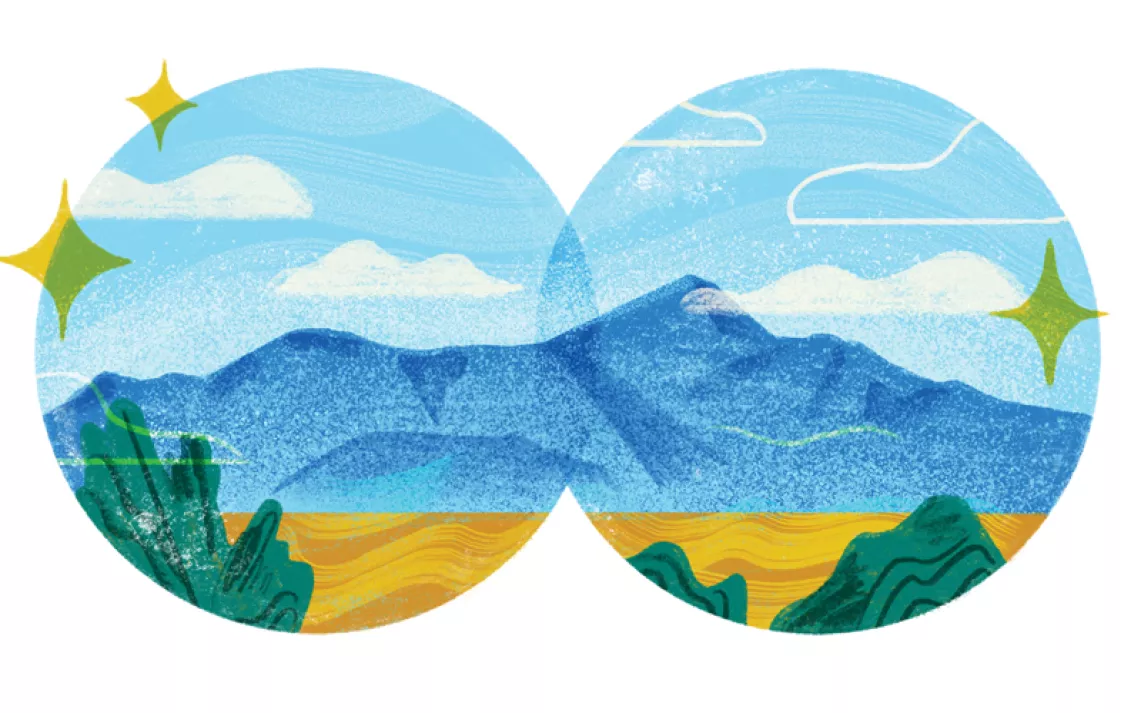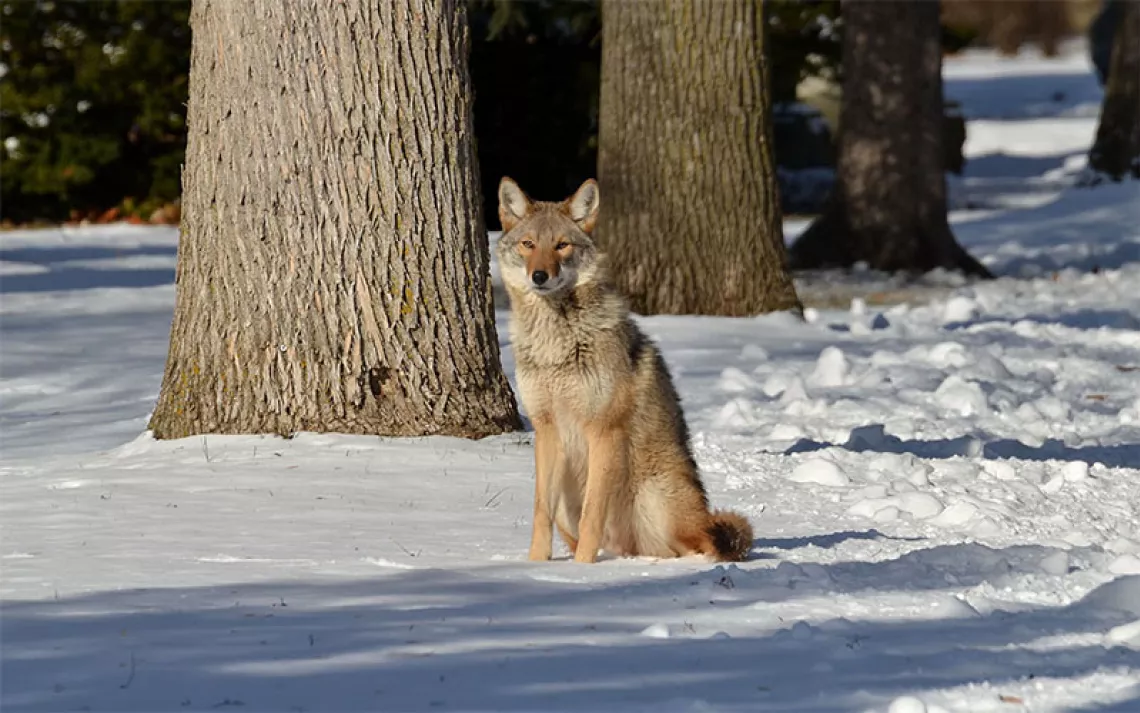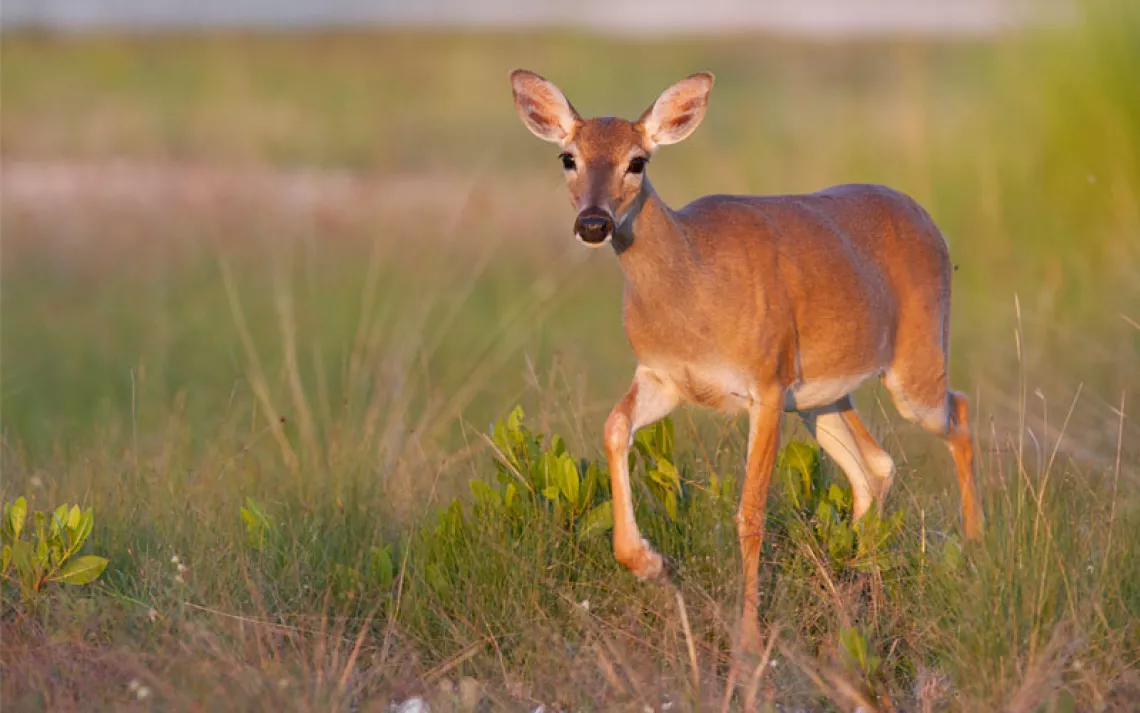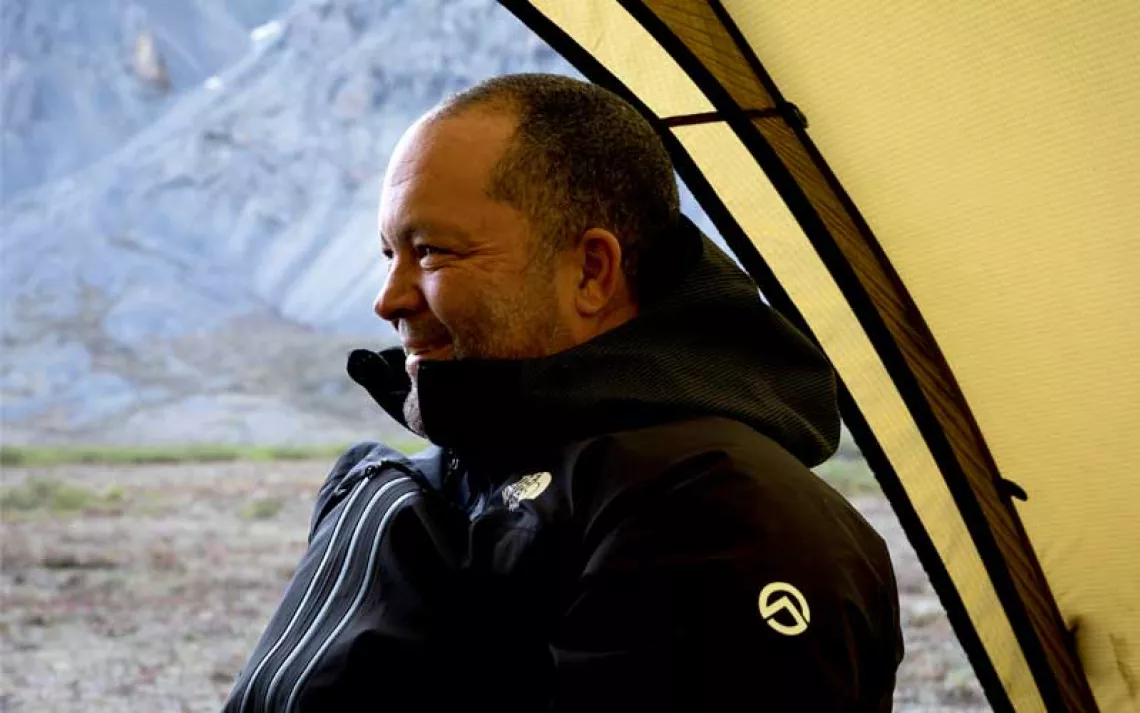ENVIRONMENT EXPLAINED
What We Find in the Dark
The joys of hiking nocturnally
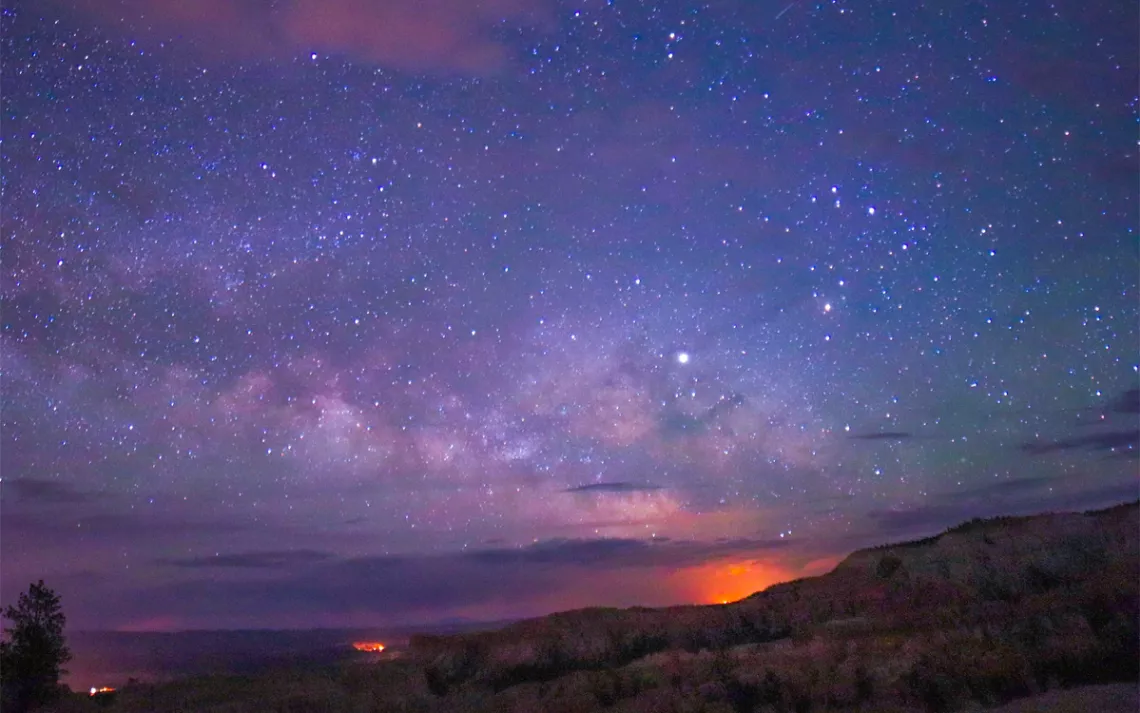
Photo by Justin Cole | iStock
The moon would tell us when to go. Sitting in camp, our backpacks at the ready, my girlfriend Splash and I watch the late summer sunlight of the Utah afternoon fade to the rich shades of night, waiting for the moon to rise high over the Colorado Plateau. In time, the sun down and the last rays of light sliding back from the horizon, we grab our gear and start along Bryce Canyon National Park’s rim trail, intent on exploring the winding trail by moonlight.
For almost every other camping and hiking trip I’d ever planned, everything was focused on the daylight hours. That’s only natural, really. Humans are daylight creatures. Night is a time to build a fire, maybe have a tipple of whiskey, and huddle close together before retiring to the bedrolls. But the trails still snake through the forests and deserts after the sun goes down, and anyone who’s been out in the high desert on the night of a full moon knows the friendly darkness of such nights, when headlamps and lanterns obscure more than they reveal. I wanted to explore that darkness, to put my boots on familiar ground during a time I’m normally sliding into my sleeping bag.
While Splash and I hike along the canyon rim, happily ensconced in the cool evening air, I can’t help but think about all the creatures that make the most of the evening hours that are just beginning to stir—mule deer, mountain lions, black bears, and cacomistle (a slinky, high desert ringtail that looks something like a raccoon trying to do an impression of a housecat). Even if I won’t see them, they’ll likely see me—assisted by an anatomical gift our ancestors lost long ago.
*
Many nocturnal beasts have a special layer at the back of their eyes, tucked behind the retina, called a tapetum lucidum. If your cat’s eyes shine in a flash photo, that’s what you’re seeing—a biological reflector, bouncing visible light back through the eye to help the little beast see better in the dark. Some primates still have this nifty adaptation, but our particular ancestral line lost it more than 40 million years ago. These ancient forebears of ours were more like modern-day tarsiers—small, insect-hunting primates with eyes as big as, if not larger than, their brains. Rather than relying on a reflective layer inside the eye, our tarsier-like ancestors evolved bigger eyes to take in more light during the night. But as the descendents of these big-eyed primates started to explore and forage during the daytime, big eyes were no longer needed. Through tens of millions of years, our ancestors totally lost their ability to see well in the dark, leaving us to wonder what’s rustling out there in the night.
For visual creatures, not being able to see well in the dark can be scary enough. But there’s another reason we usually prefer to avoid wandering around at night, something deep in our brains. Light, researchers have found, helps suppress activity in the amygdala, or the part of the brain that manages our fear responses. Turn off the lights and our amygdalas are more active, literally giving us more reason to fear. We are naturally more afraid of the dark, even with a handy flashlight in hand and the knowledge that there are no monsters waiting to snatch us. Add the risks of potential slips, wrenched ankles, and getting lost in the dark wilderness and it’s really no wonder why we prefer to clamber and amble around in the sunlight.
*
But on this night, Splash and I go against our biology. By the time we reach the trailhead at the edge of the parking lot, the sweeping vistas of the Colorado Plateau are shrouded and the moon has risen far above the horizon. Before us is a pale path, traveled by hundreds of other people earlier in the day, that is now deserted—a thin thread leading into the bowls of the canyon. I can’t help but shudder a little as I pass by some of the overlook points. I know how steep these canyon sides are. My own amygdala starts to present unrealistic yet nevertheless affecting scenarios of something jumping out to pull me over the edge. I grip the straps of my pack a little tighter and keep scuffing my boots on the packed sediment beneath, eagerly awaiting the maze at the canyon floor.
We have headlamps tucked in our side pockets in case of emergency, but even turning them on to test makes me wince a little. Light can brighten a small patch of the night but blind you to everything else. Instead we move to the rhythm of the moon and the stars, watching our shadows slide past the towering hoodoos of the Queen’s Garden that now seem blacker than the deepest black. I keep hoping to see or hear a cacomistle traipse by in the dark. I don’t spot any, perhaps because they’re so much better at seeing me.
*
There’s a bit of folk knowledge that says when we deprive ourselves of one sense, the others grow stronger. It feels true tonight. The dark has pushed us just far enough. Every sound feels louder, and every waft of the late summer breeze feels like a caress. As Splash and I enter a grove of towering pines, spindly shadows casting even deeper shades over the ground, we start to muse about what it would be like to be werewolves, to cast off our packs, change beneath the moon, and run through the forest dark. The thought makes my skin tingle. During the day, surrounded by other tourists and such a defined path, I focus on getting from the beginning to the end. Now, in the dark, I want to watch Earth’s rotation scroll through the starry vista all night long. I feel held close by the earth—not just passing through but invited to stay a while.
This is a fortunate evening. On another night, perhaps that of the new moon or a sky blanketed by clouds, such a stroll might feel a bit more intimidating. But on this night—and others I’ve spent in Arches, in Grand Staircase, in Dinosaur—I feel in touch with something that shrinks away and hides in the daylight. I don’t feel like I’m on autopilot. I don’t have to remind myself to slow down and soak in the surrounding grandeur. I feel fully embodied in this place, part of it, connected and awake, the moonlit canyon requiring that I feel and listen carefully. It's far from lycanthropy, but it’s hard to ignore the effects of this lunar stroll.
*
I feel only a little embarrassed that I didn’t account for the switchbacks that will take us back up to the rim, over 320 feet above. The climb out of the canyon is harsher than the trip down. Splash and I huff and curse much of the way back up, lying that we’ll never again undertake such a journey as if the fibs might quell the burning in our thighs. Step by step, the climb back up to Sunset Point starts to erode some of our happy nighttime trance, though not entirely. In time we reach the canyon forests along the rim and the mystery of the dark hours starts to settle once more. I can’t see all that far into the stands of pine before my vision goes grainy, leaving me to wonder what’s out there, perhaps watching the panting and ungainly bipeds pass by. Perhaps I’m not as suited to the night as they are, but I can still savor the feeling. Hiking in the dark can be a little scary, but a thumping pulse helps remind me I’m alive.
 The Magazine of The Sierra Club
The Magazine of The Sierra Club
